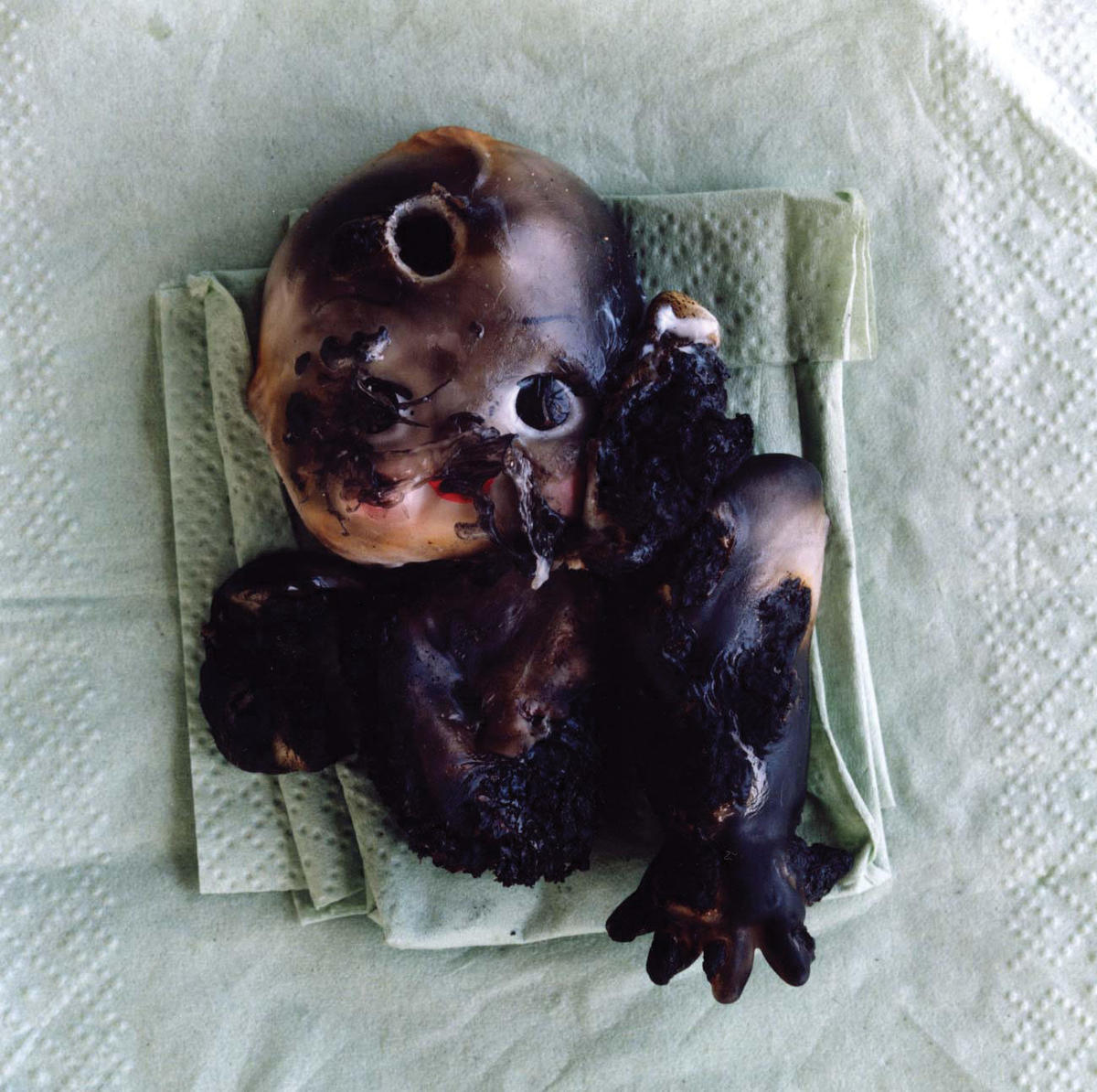
Tehran
9th Tehran International Photography Biennial
Various venues
June–July 2004
The Photography Biennial, held under the auspices of the Tehran Museum of Contemporary Art, showed over 250 contributions both photojournalistic and artistic in temperament, a (surprising) number of which were well worth seeing. Farshid Azarang’s arrangement of old portraits of family members, for example, juxtaposed with images of TV screens, was a self-reflective commentary on history and the media that was intriguing and enigmatic, in a pleasant, Hassan Khan-ish sort of way. The work of Mohamad Ghazali, who won first prize with a graphic constellation of colored plaques propping up a series of forbidding architectural motifs and identical self-portraits, was similar in its shrewdly aestheticized, self-reflective appeal.
A number of participants combined their technical prowess with a wry sense of humor, as was the case with Maryam Kian’s unexpected graffiti compositions. Just as sardonic, photojournalist Hassan Sarbakhshian does without the routine corniness accompanying tragic topics (Bam), opting instead for blunt, vivid, mordant commentary. His portraits of politicians are equally known for being demystifying and tongue-in-cheek. The above work was refreshing in that it stood out against the homogenous nature of much of the show. For the number of photographs indulging in ‘misérabilisme,’ or in the poetic effects of ruins and rickety old windows, seashores and deserted streets, was simply staggering — bohemian melancholia and dreary black-and-white innuendos, oozing with deep, gripping significance.
The most politically outspoken genre in Iran is not photography, nor ‘cinéma d’auteur,’ nor the visual arts, but mainstream action flicks, comedies, and love dramas that regularly grapple with contemporary, sociopolitical issues. What would have done the Biennial a world of good, in other words, would have been not dissident heroics and other forms of political marketing, but instead a sense of history going beyond nostalgic sentiment. Many Tehran photographers see their anti-urban escapism as a form of savoir vivre. I further suspect that a prevalence of cumbersome form and style is due to Iran’s overbearing literary heritage: symbols over symbols; emblems over emblems; The Road, the Old Man, the Sea. To state the obvious, any metaphor or metonymy that would be clumsy enough in a Forough Farrokhzad stanza loses absolutely all potential as an image.
And this is why those photographs with the slightest trace of a post-literary stance do stand out. As a case in point, Arash Hanaei’s burnt doll is fantastic in its straightforward goriness — though its quasi-allegorical title, Democracy after Dictatorship, doesn’t do it any favors. By way of comparison, Jamshid Haatam shows the silhouette of a Barbie doll floating in front of a dreamy landscape of trees, arguably an astute, sarcastic comment on the pastoral fantasies dominating the Biennial — and sparking one’s curiosity as to artistic purpose more than any other photo.
Embedded within a triptych by Reza Sayed Paydari was a particularly absorbing series of snapshots of the Tehran subway. Amirhossein Shahbodaghlou’s picture of a subway in East Asia was interesting in that his other photograph on display was actually of the countrified variety (wobbly wooden shutters in black and white). The contrast of the latter with the saturated colors of a Tokyo subway — currently a worldwide pop culture evergreen — was mesmerizing in that it revealed unsuspected folkloric parallels between the two. Nevertheless, glitzy, plastic pop is arguably the lesser evil, even when it replicates the likes of Andreas Gursky and Martin Parr. It is worth mentioning that the first photographs ever to leave Iran, taken in the 1870s by Antoine Sevruguin, were largely examples of ahistorical Orientalism that included poverty-stricken old women, donkeys, and desolate countrysides. Emblematic indeed. If you do assume an ahistorical stance, copying and quoting and appropriating is all very well, but there must surely be other things on the global smorgasbord to choose from in this day and age? What’s the point in ripping off a tradition that has never gone beyond the postcard industry? In Tehran, you’re rarely more than twenty feet away from a pizzeria serving chiizberger in a setting of purple bathroom tiles, fake black marble and pink neon, with syrupy soft-rock in the background. Tehran is traffic jams, baroque furniture, brute concrete, postmodern facades, advertising billboards, and flamboyant teenagers in Daddy’s BMW convertible. But judging by the Biennial, you would be forgiven for assuming Iran looks like something out of a kitchen calendar at a UNICEF Christmas fair. Which, to put it mildly, is a bit of a shame.